ON THE CERAMIC ROAD
A KILN TO REMEMBER
WOOD FIRING IN SETO
By Zoe Thorsland
Editor’s Note: On October 10, 2023 nine TPS Members began a two-and-a-half week experience in Seto, Japan organized by TPS Member Tomoko Jarrell. Also joining the group as translator and knowledgeable ceramicist was TPS Member Sachiko Campe. The two-plus week intensive pottery workshop was hosted by former TPS instructor Hiroshige Kato. Seto, Japan is located in the hilly region of northern Aichi Prefecture in Central Japan. Seto has been one of the most pivotal places in the Japanese ceramics industry for more than 1000 years and many ceramic festivals are held there throughout the year. In fact, a generic word for ceramics in Japanese is known as “setomono” which means products of Seto. TPS Board Vice President, Zoe Thorsland was one of the lucky 9 gakusei (students) to participate in this amazing workshop and she has shared her insights and beautiful photos from that trip.
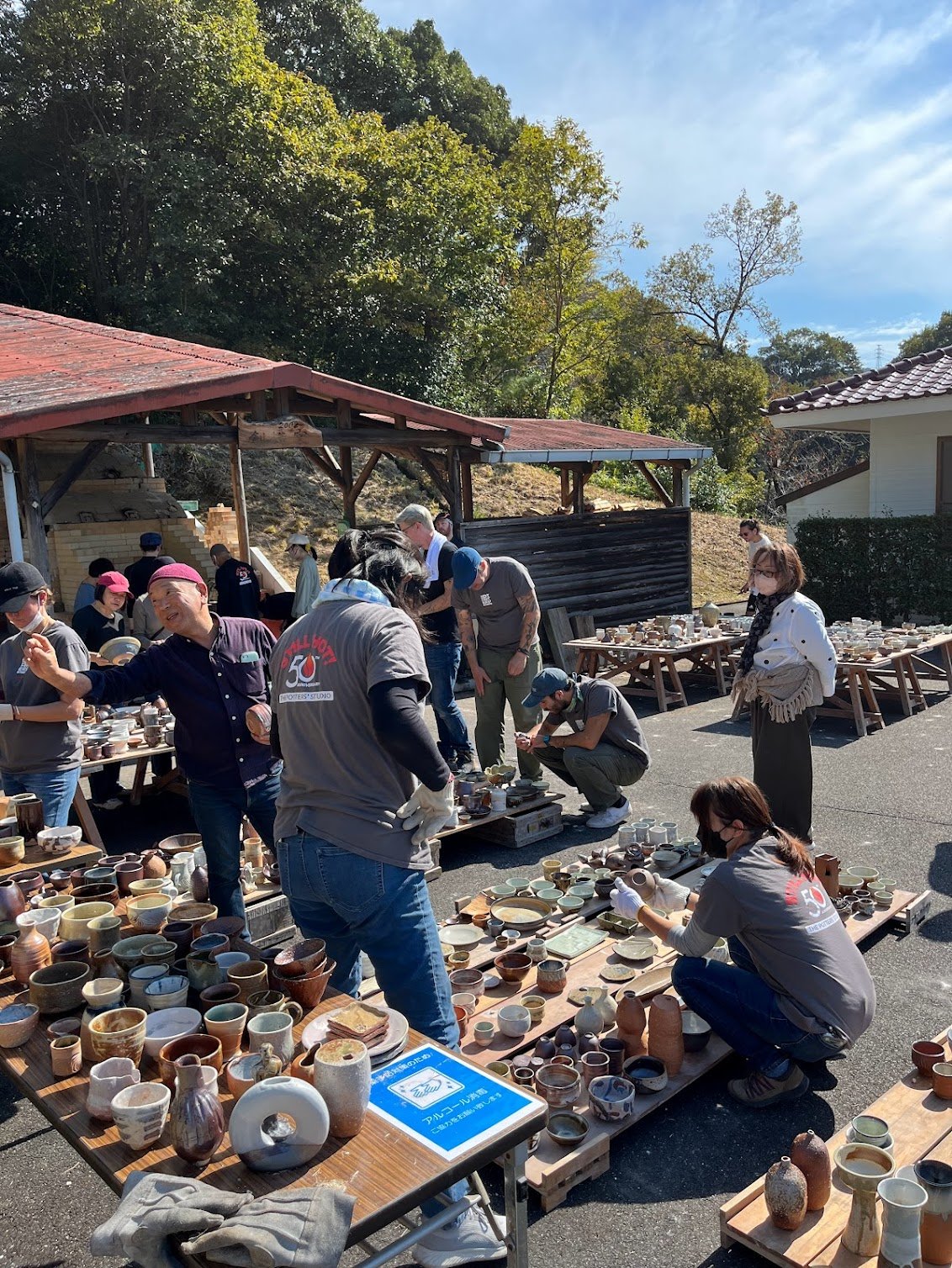
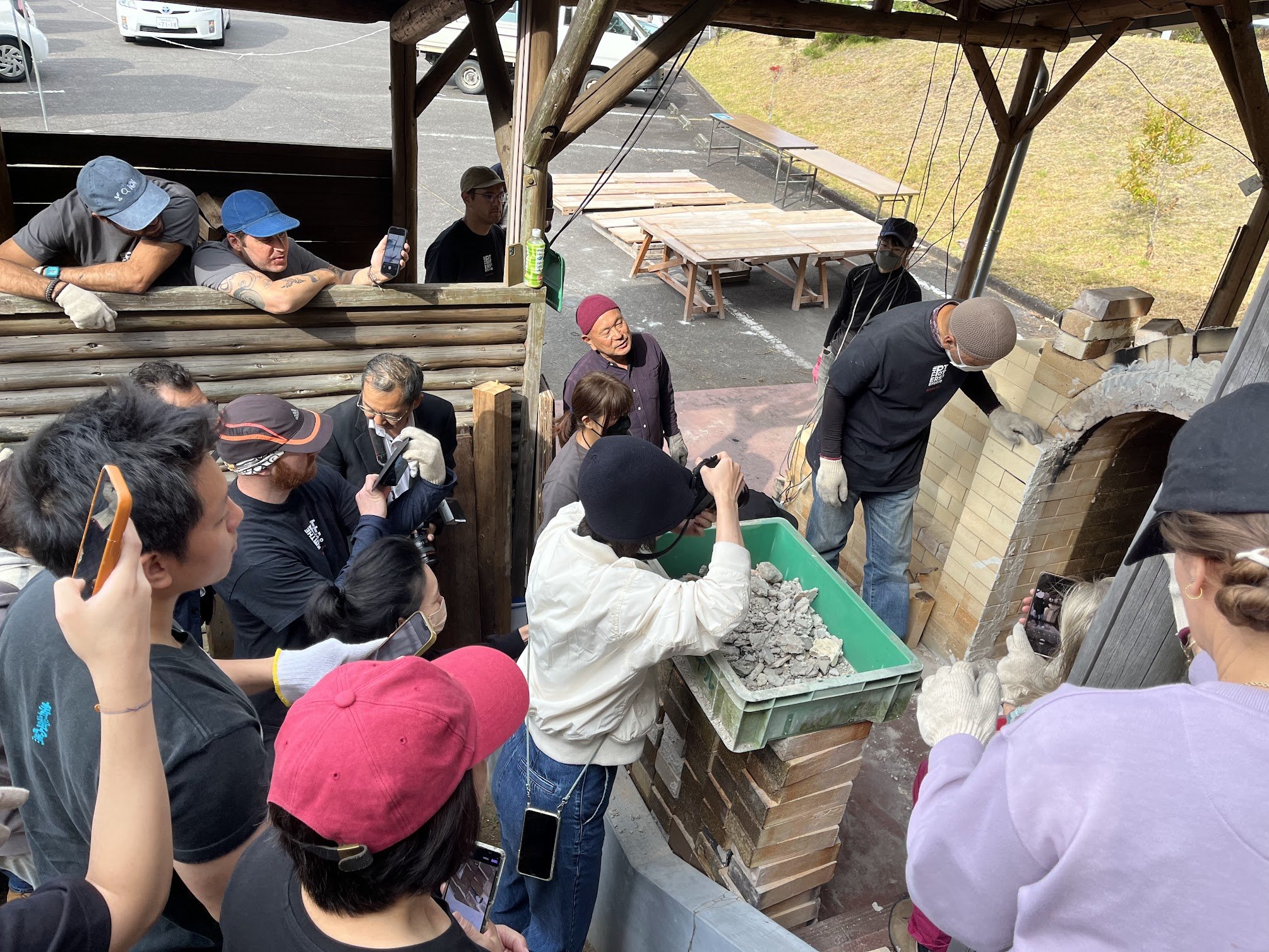
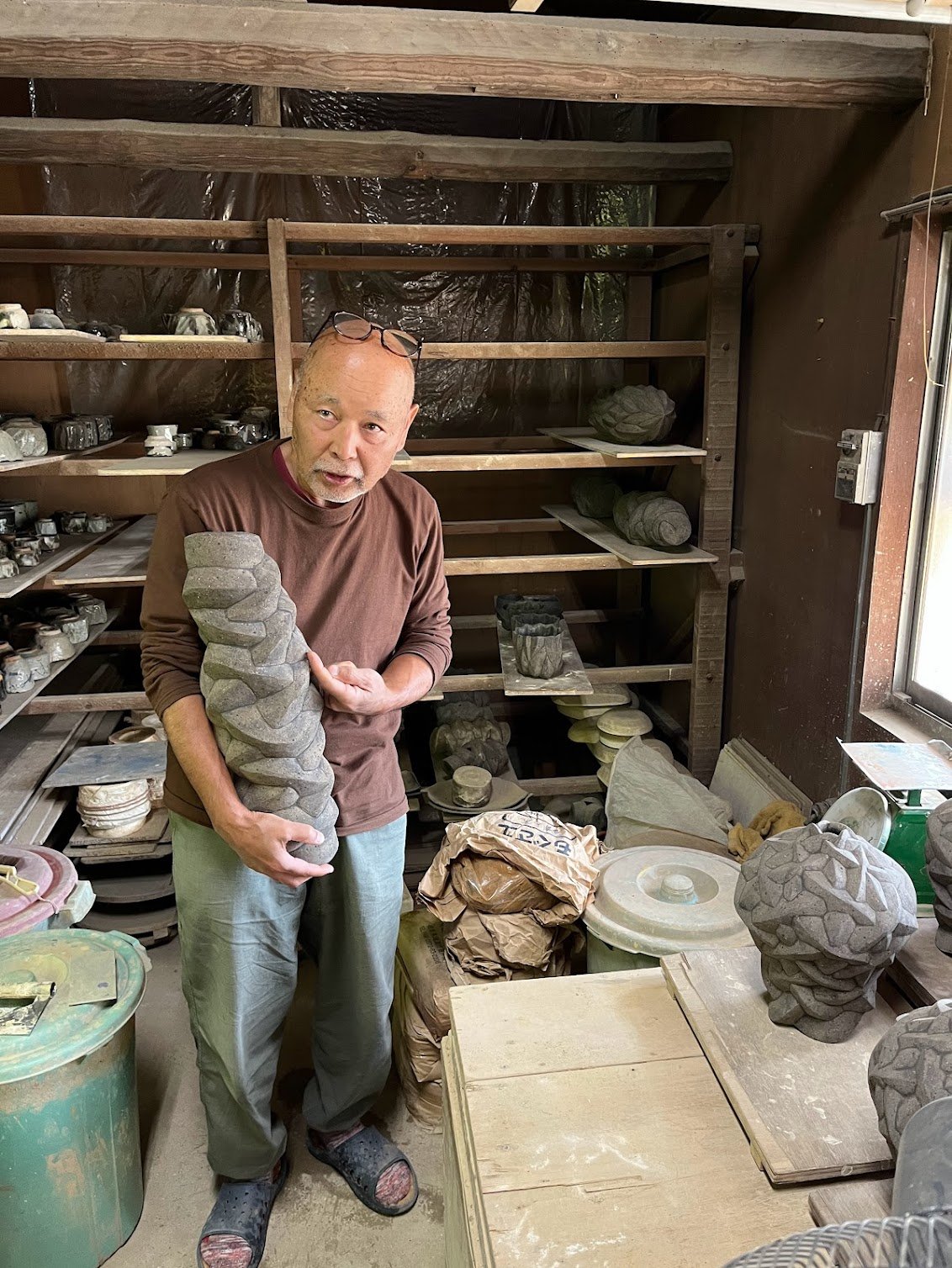
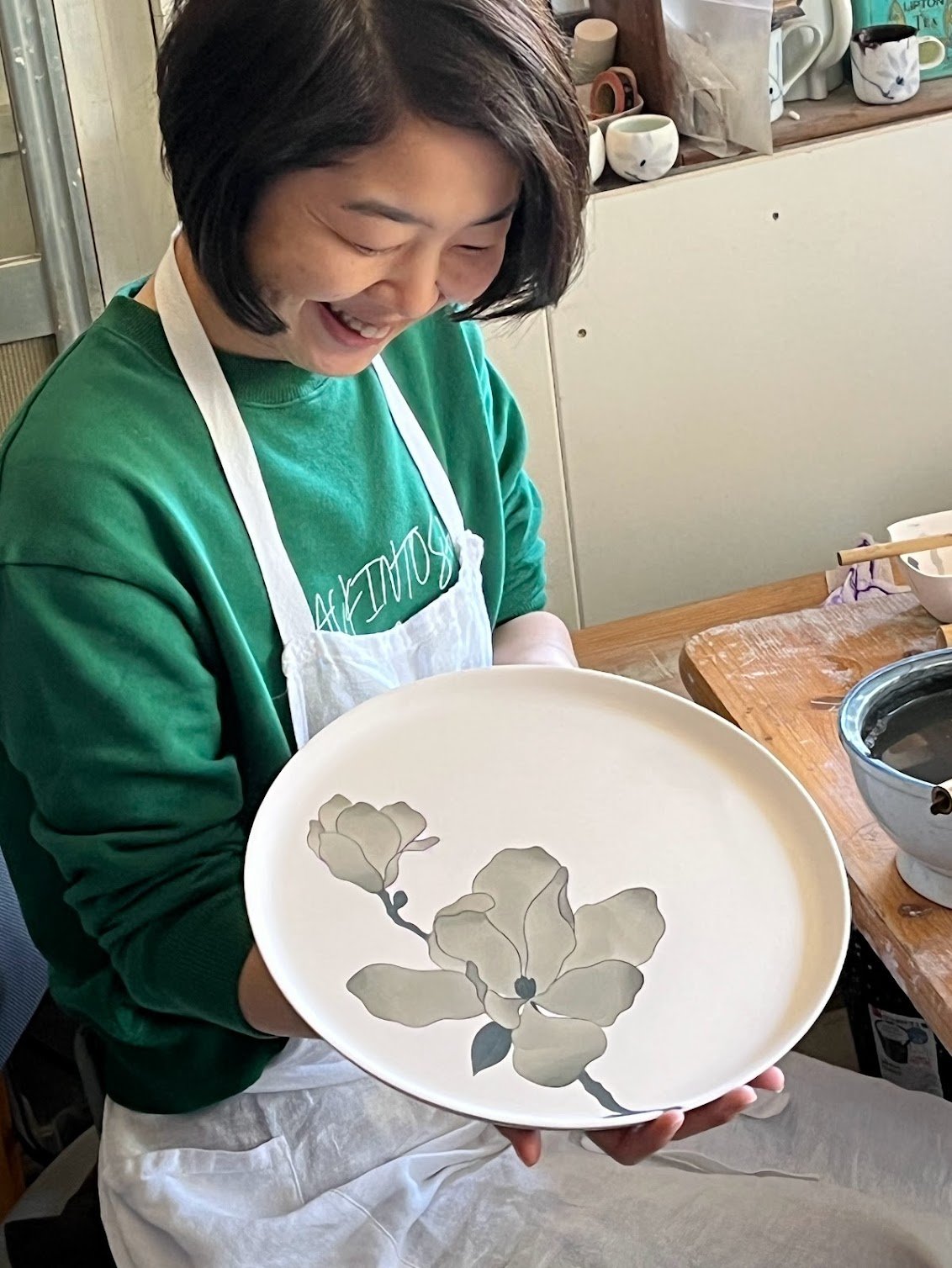
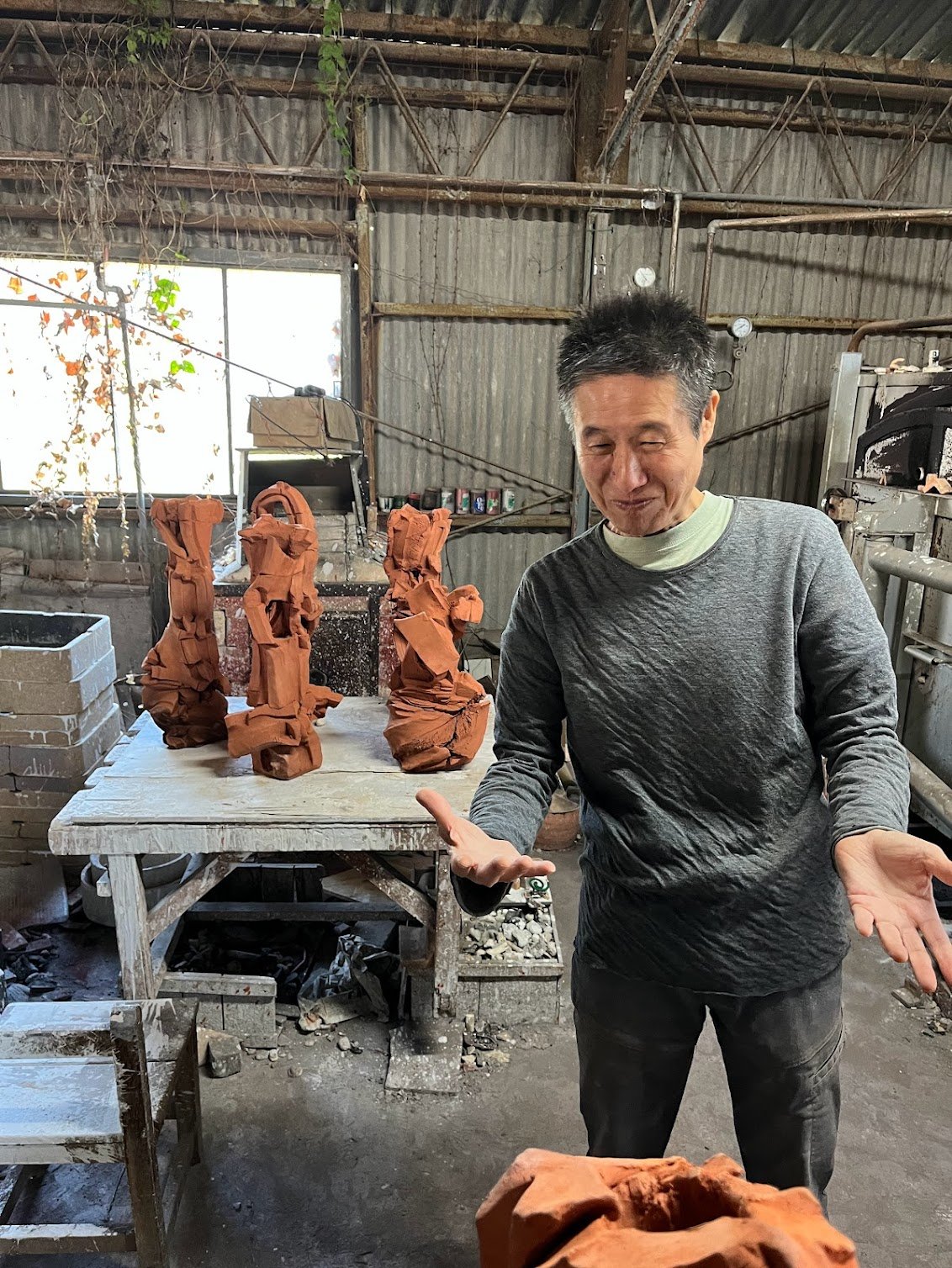
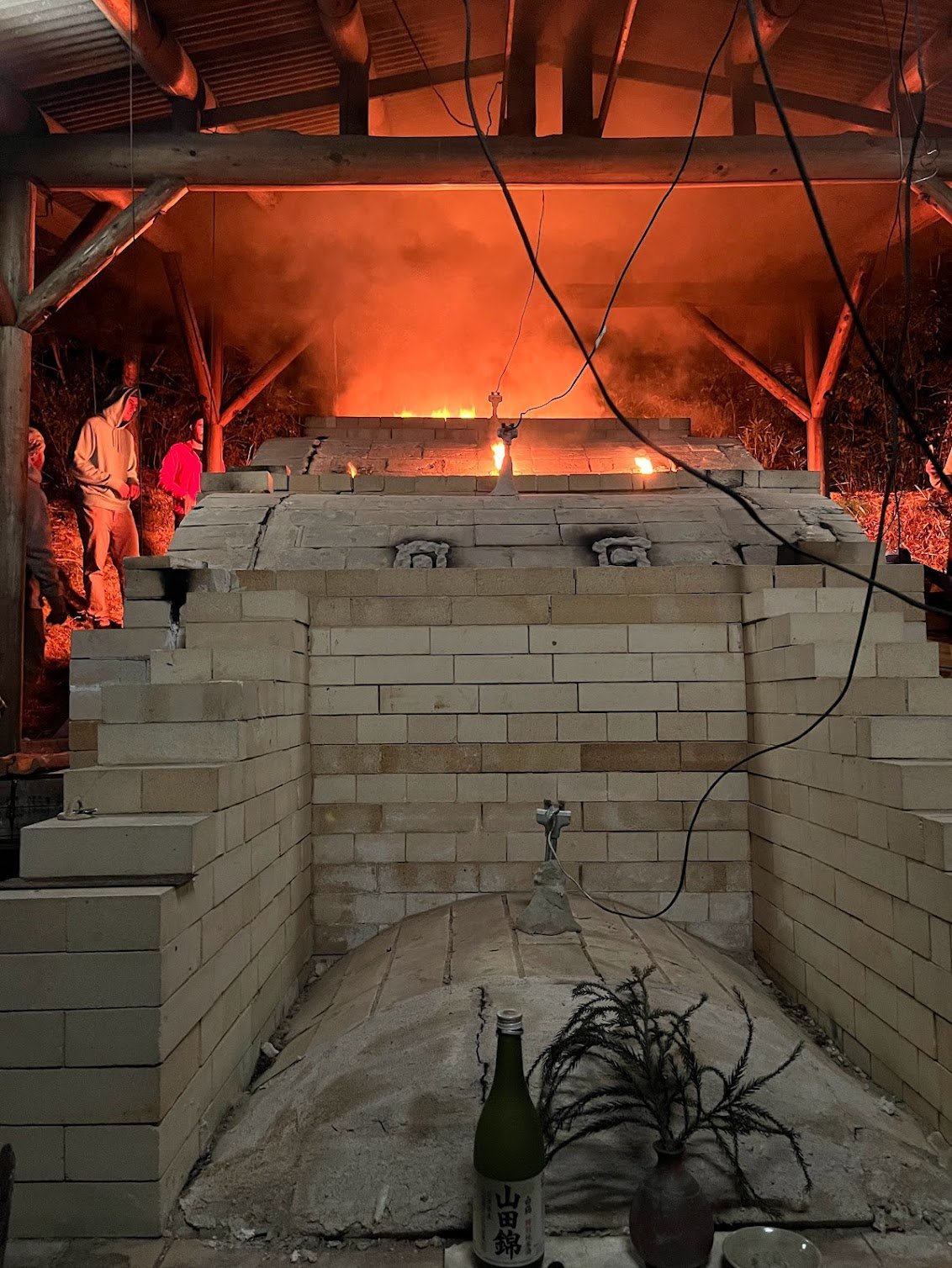
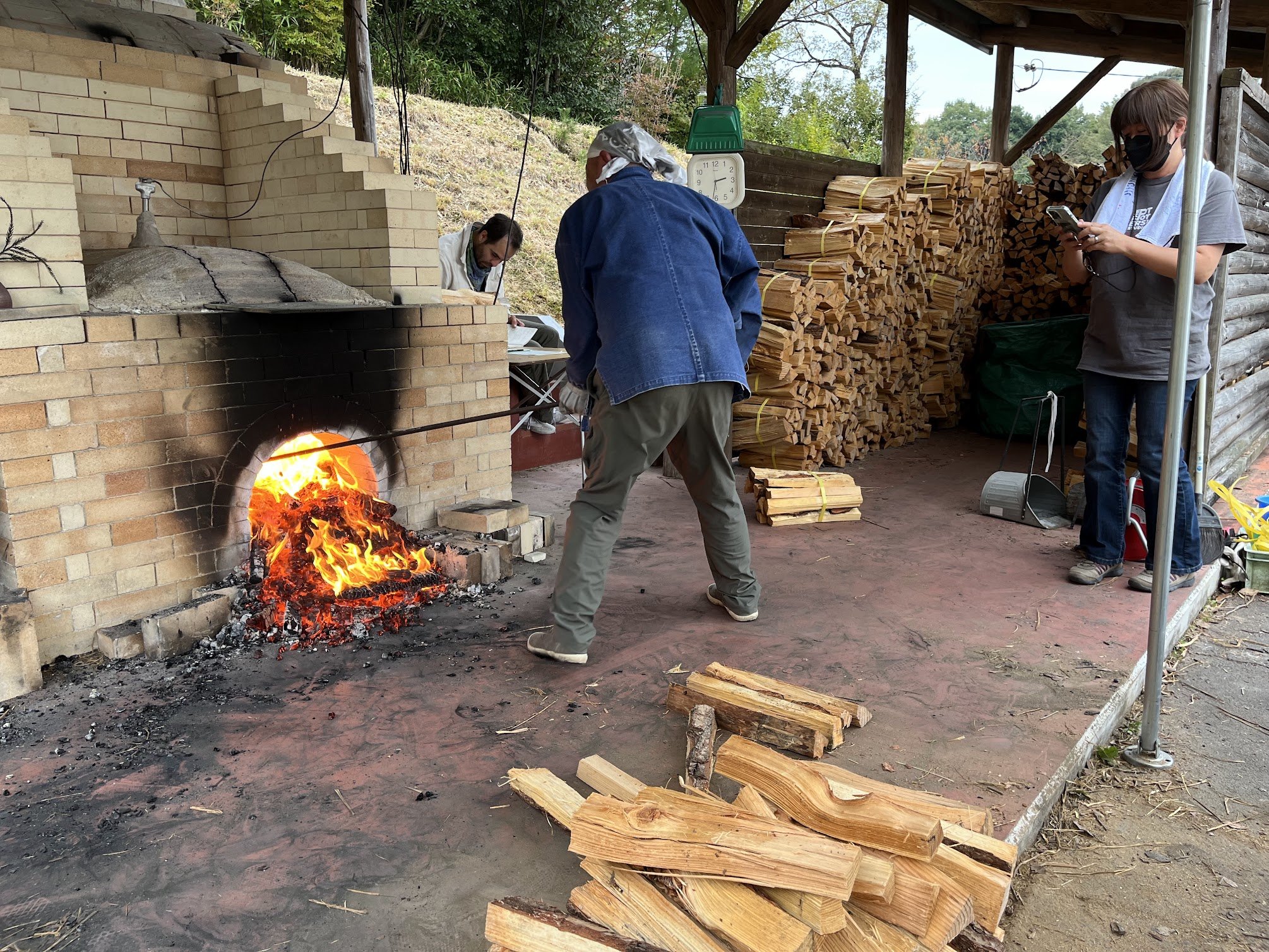

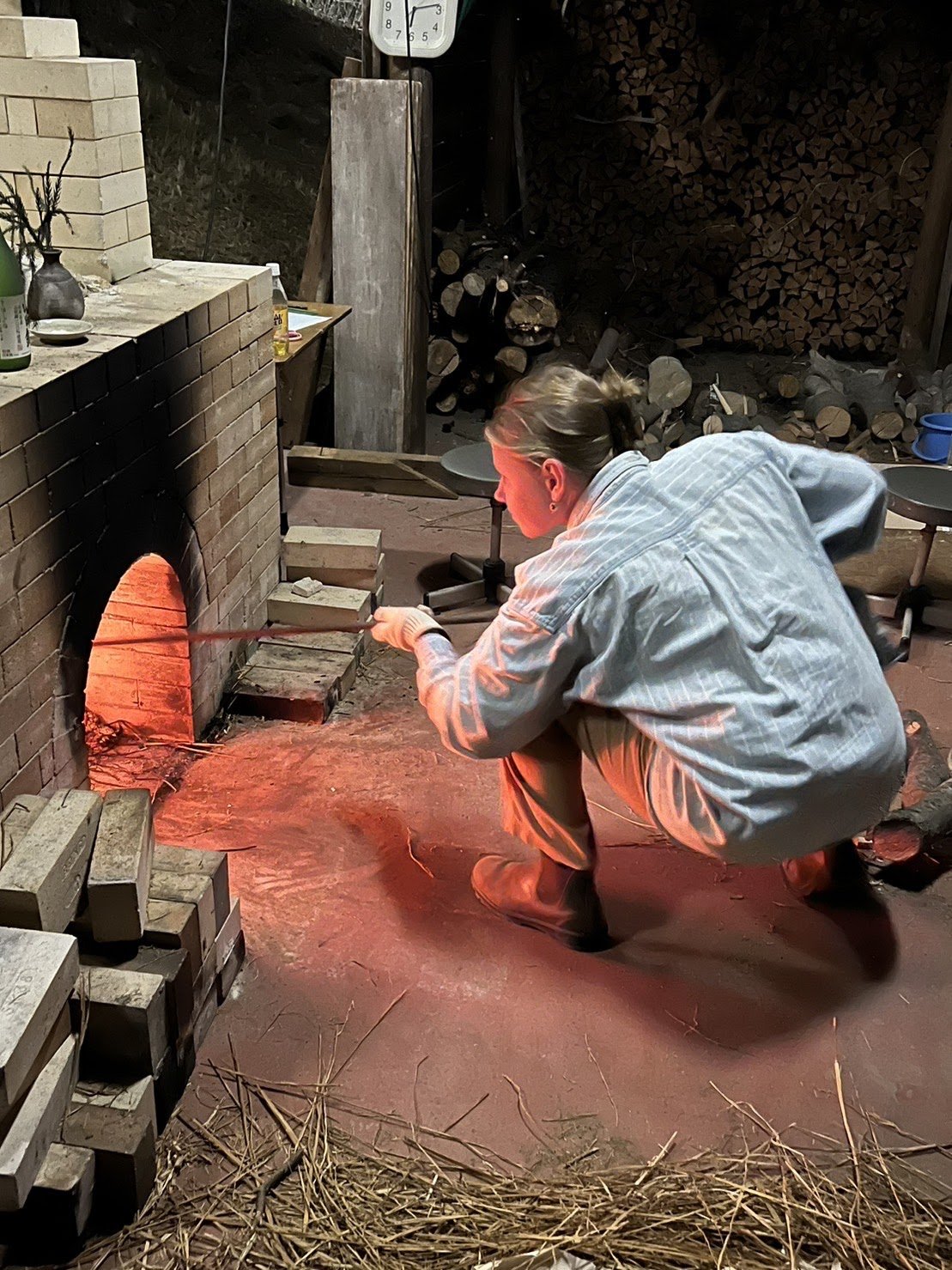
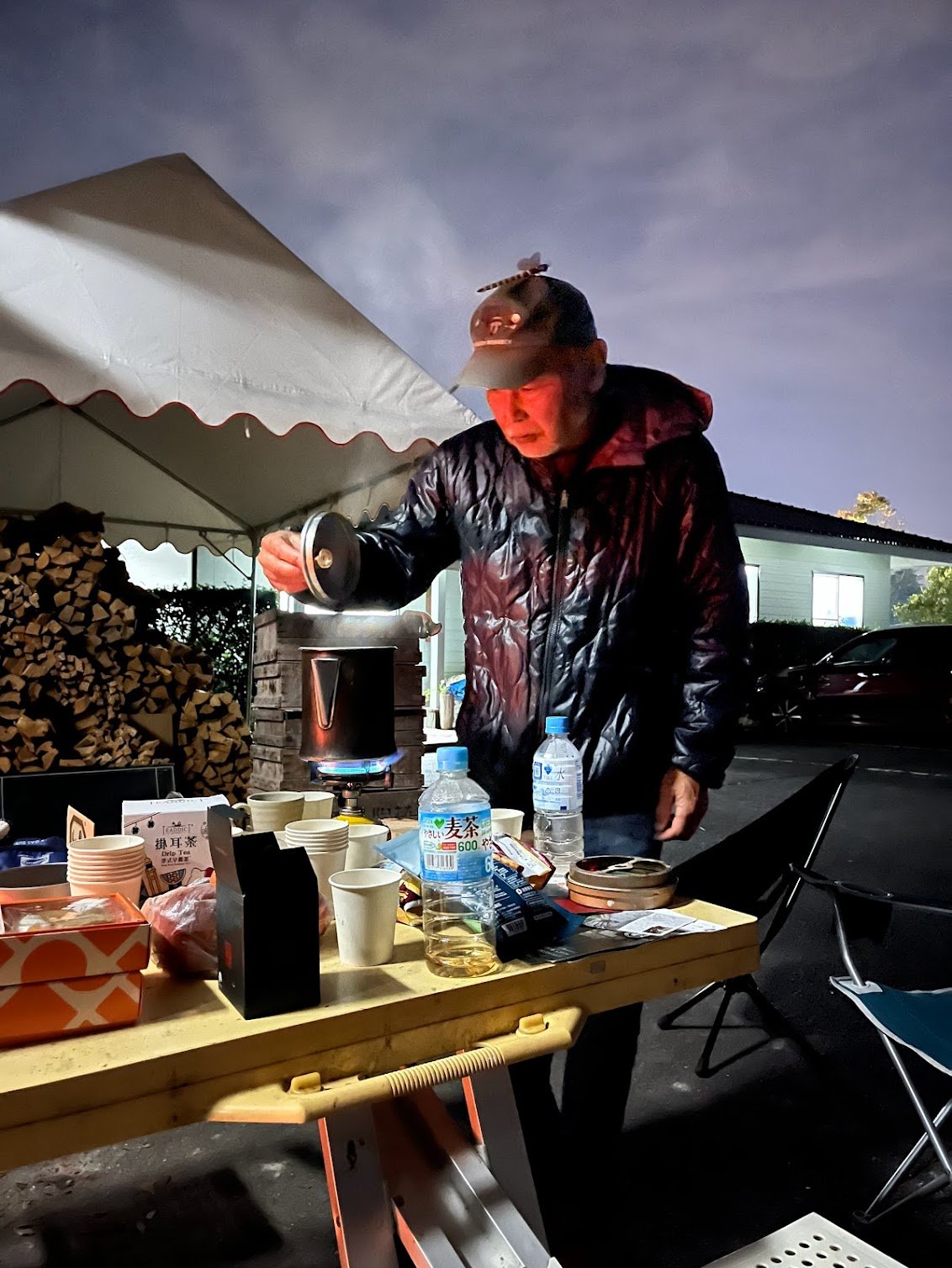
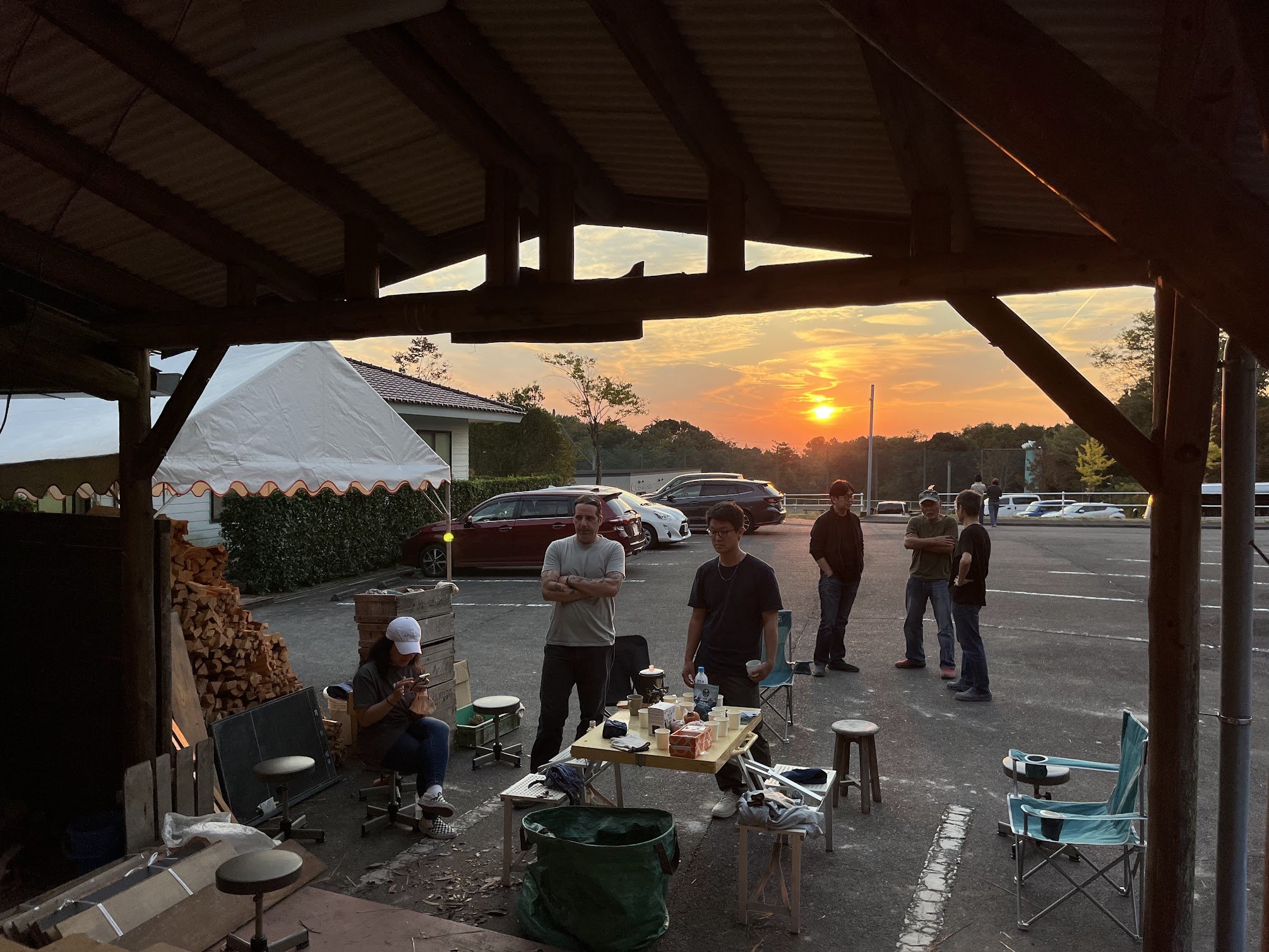
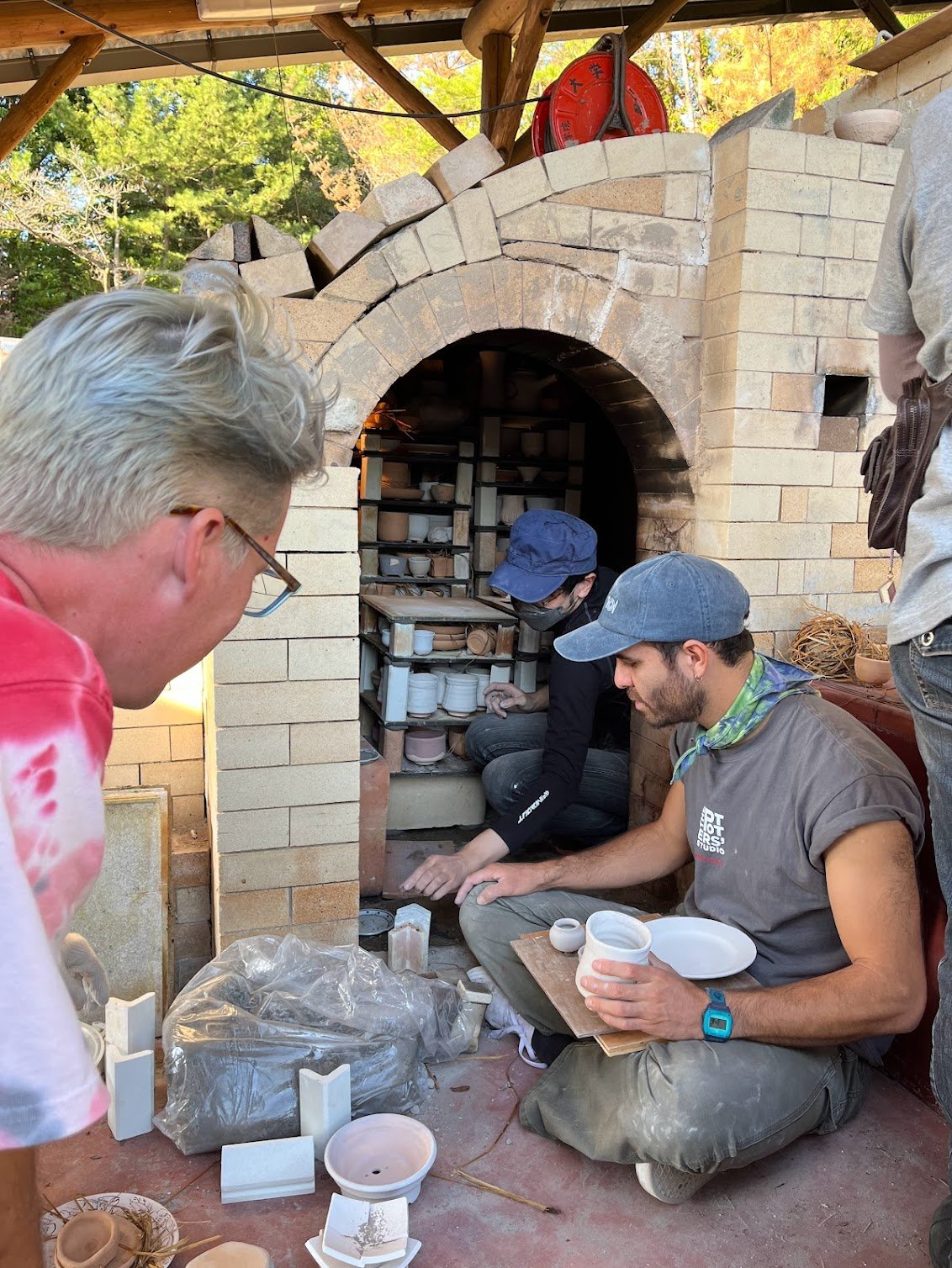

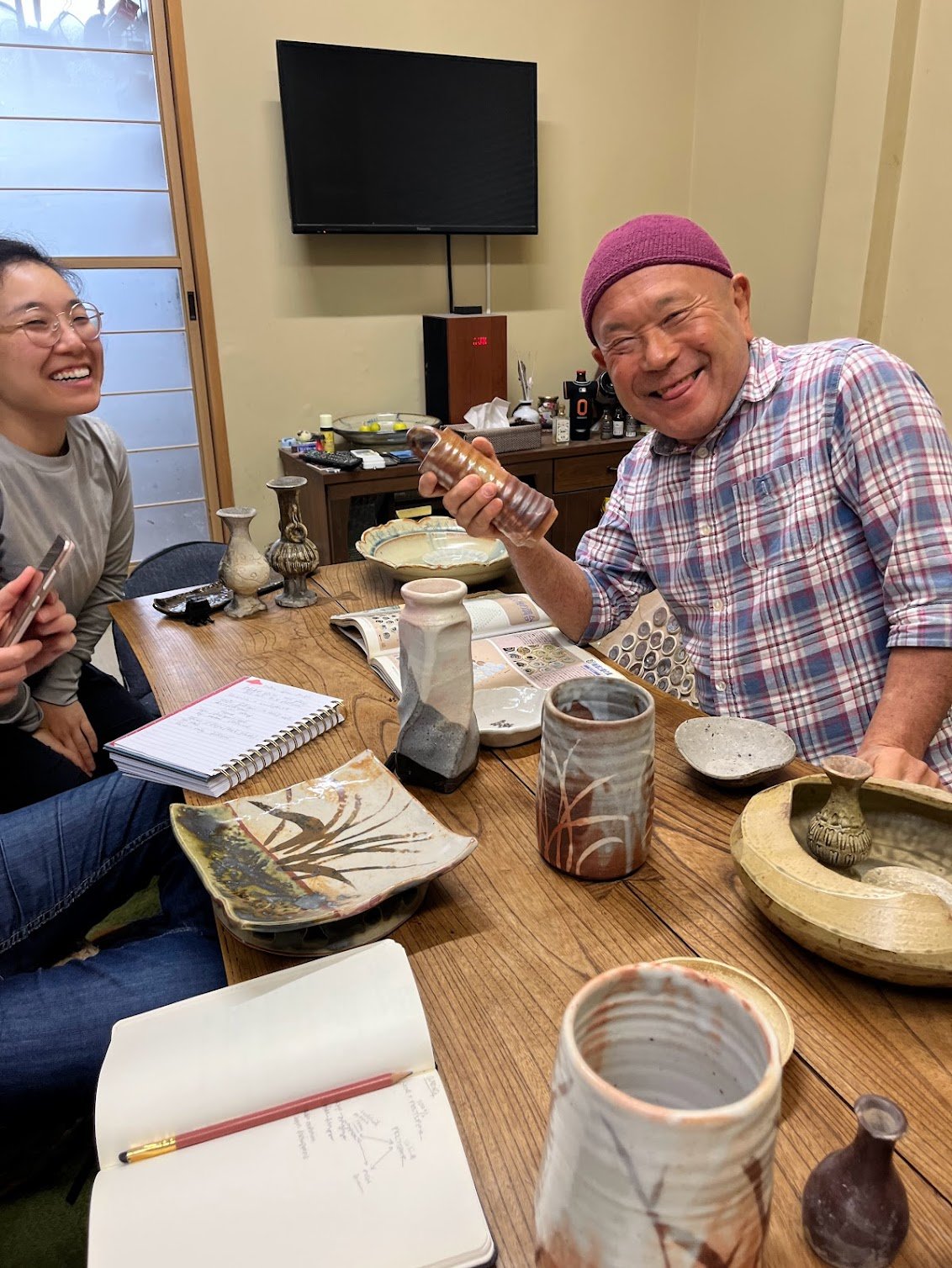
Arriving in Seto: We had 3 days to make and trim 3 cubic feet of work. All in preparation for a 4-day wood firing of a noborigama (a climbing kiln). I was one of 9 potters from TPS to travel to Seto, Japan to learn about firing a wood kiln from 3 master potters, with the opportunity to share kiln shelves with artists from Japan and Hong Kong. I arrived in Seto at 9pm the night before our first studio day. Hiroshige Kato, a 12th-generation potter who we all lovingly called “Sensei”, welcomed me with a hug and an insistence that I stock up at Family Mart before we retreated to the Kasen studio set back in the hills away from the main road and the small town. Seto is a small, but famous pottery production town and home to one of the six ancient kilns of Japan with firings dating back to the middle ages. Seto wasn’t what I expected from a pottery town, despite being small, it had wonderful coffee shops like Vousho’s Coffee Factory and mind-blowing unagi shops set amongst a lively art scene. Sensei wasn’t what I expected from a master potter, either. He wore a beanie and a mischievous smile, and blasted the Beatles, the Rolling Stones, and Queen in his minivan as he carted us around the small town and occasionally on excursions to the local onsens (Japanese natural spring baths).
Making Work: Liz Liu, Irina Tsekhmistrouk, Adrianna Delgadillo, and I spent the first week living in small rooms above the Kasen studio. We shared a kitchen and took turns cooking ramen and frying eggs, getting more creative each day. Our making days were adrenaline charged. There can be such drama in a simple art. We bought local clay, picked up interesting tools from the best stocked but most disorganized tool shop of all time, and spent 9am to 11pm or later at the wheel. The first thing I noticed was the quality of the clay, Kato Sensei’s stoneware clay, was almost fluffy and extremely forgiving. We dabbled in clay from other major pottery towns as well, like Shigaraki (heavily grogged) and Bisen (deep warm charcoal color with an oily sheen). Each one of us had a slightly different style, but we all tried our hands at traditional forms like tea bowls and sake bottles. In the frenzy of making there was one wareboard casualty, Justin Hoffman lost several pieces after a vicious attack from the studio turtle Herman, who reveled in charging at ankles and playing Godzilla.
The Firing & Lessons Learned: Sorting out the firing schedule took countless hours and several meetings to lock down, needing to incorporate 30 people into a 4-dimensional jigsaw of firing shifts and carpooling. We were charged with keeping the fire alive around the clock for 4 days in shifts of 4 - 6 hours. Those 4 days were a blur of singed eyebrows, sleep deprivation and delirious dance parties, and passing time cooking potatoes and octopus over our discarded coals.
Since it is too overwhelming to try to distill the magic of my 2.5 weeks in Seto into a cohesive narrative, instead I will share with you the things I learned along the way:
3-Ingredient Glazes: Glazes don’t need to be complex. All of Katosan’s glazes were a ratio of feldspar, wood ash, and iron. The effects were stunning–the iron heavy glaze looked like tenmoku, the ash-heavy glaze came out a complex yellow/green, the ash/feldspar glaze called ofuke had a similar effect to the celadons, and the shino was mostly feldspar. I was reminded of the virtue of simplicity, in a hobby that often gets overcomplicated or out of hand.
Extend the engine: The first chamber of the 3-chamber noborigama kiln is the engine of the firing. Depending on the size, it can be hard to get to temperature. We were targeting 1250 C and had to rake a pile of coals outside of the chamber to extend the firing power.
Mind the Gap! In the first chamber, there were a few airways that lead into the 2nd chamber. Justin Hoffman bravely crawled into the sooty chamber to place his pots in these windows for a wood ash extreme effect. On the first overnight shift, these airways got clogged by coals and wood causing the temp to drop down to 300 C even though we were shooting for 900 C by morning. Manuel Garcia and Adrianna were freaked out about the temperature dip, but were able to figure out the problem and clear the airways, to get the fire back on track. We peaked at 1290 C in our firing.
When lost in translation, smile and wave: Over the course of the firing the Berkeley team was interviewed by newspapers, local tv reporters, and the mayor himself. Tomoko did her best to translate our long-winded answers. But the most memorable shot of the TPS team is Will, Adrianna, Manuel being asked to smile and wave with both hands looking directly at the camera for 2 minutes straight.
Innovation in humble studios: Local potters opened their studios for workshops and viewings of their works. It was incredible to learn brush work from Mayuki Kato, see bisqueware destined for international galleries and museums from Shozo Michikawa, and sit in the living room of Shingo Takeuchi to marvel at the masterful rope-like hand built pieces. The soulfulness and mastery that went into each piece blew me away, and it was a wonderful reminder that you don’t need a lot of space or fancy tools to create.
No matter what your experience, pottery is a meeting point that gathers wonderful people: I have never been so grateful to be on my own journey making pots. I’ve only been at the wheel 2 years, while others in my group had 10+ years experience. It all paled in comparison to the generational knowledge that the masters and artists grew up in. What struck me was that we all had a place and common love to endlessly discuss and muse on. This really came to light on October 26, the cracking of the kiln. Every potter no matter their experience or culture crowded around, anxiously pining for that first peak at the art we created together.
A special thanks to Tomoko Jarrell and Sachiko Campe for their work in making this trip happen, to Hiroshige Kato for all his time and expertise and care in hosting us, and all of the wonderful artists who gave us rides or shared their snacks around the kiln fire.
Read more news articles >
